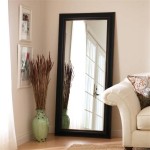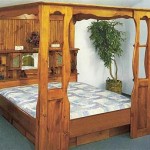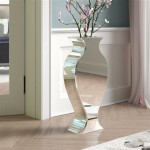Mirrors That Look Like Window Panes: A Comprehensive Overview
Mirrors designed to mimic the appearance of window panes have become increasingly popular in interior design. They offer a unique blend of functionality and aesthetic appeal, providing the reflective properties of a mirror while simultaneously creating the illusion of increased space and natural light. These mirrors are distinguished by their grid-like framework, resembling the muntins and mullions of a traditional window, and are available in a wide array of styles, sizes, and materials.
The appeal of window pane mirrors extends beyond simple aesthetics. They contribute to the overall ambiance of a room by reflecting light, which can brighten darker areas and make smaller spaces feel larger. Furthermore, their design often evokes a sense of architectural detail, adding visual interest and character to walls that might otherwise appear plain. The versatility of these mirrors allows them to complement a diverse range of interior design styles, from rustic farmhouse to sleek modern minimalism.
The construction of window pane mirrors typically involves a combination of materials, including glass, wood, metal, and sometimes synthetic composites. The mirror itself is usually a standard glass mirror, often with a silver or aluminum backing to enhance reflectivity. The frame that creates the window pane effect can be constructed from a variety of materials, each offering its own set of advantages and disadvantages in terms of durability, cost, and aesthetic qualities. For example, wooden frames offer a classic and warm appearance, while metal frames provide a more contemporary and industrial feel.
Key Point 1: The Aesthetic and Psychological Benefits of Window Pane Mirrors
The primary advantage of a window pane mirror is its ability to enhance the aesthetic appeal of a room. The design mimics the look of a real window, which can be particularly beneficial in spaces lacking natural light sources. By reflecting existing light, the mirror brightens the room, reducing the need for artificial illumination and potentially lowering energy consumption. This effect is especially pronounced when the mirror is strategically placed opposite a window or light fixture.
Beyond simply brightening a room, window pane mirrors contribute to the perception of increased space. The reflective surface creates an illusion of depth, making smaller rooms feel more expansive. This is a particularly valuable asset in apartments or homes where space is limited. The grid-like design further enhances this effect by visually breaking up the wall and creating a sense of architectural detail.
The psychological impact of natural light and a sense of spaciousness should not be overlooked. Studies have shown that exposure to natural light can improve mood, reduce stress, and increase productivity. While a window pane mirror cannot replicate the full benefits of natural sunlight, it can mimic some of its positive effects by brightening the room and creating a more open and airy atmosphere. This can contribute to a more comfortable and inviting living environment.
Moreover, the style of the window pane mirror can significantly influence the overall aesthetic of the room. A mirror with a distressed wooden frame can complement a rustic or farmhouse design, while a sleek metal-framed mirror can enhance a modern or industrial aesthetic. The versatility of these mirrors allows homeowners to tailor their choice to their specific design preferences and create a cohesive and visually appealing space.
Key Point 2: Material Considerations and Construction Techniques
The materials used in the construction of a window pane mirror play a crucial role in its durability, appearance, and cost. The mirror itself is typically made of standard glass, often with a silver or aluminum backing to enhance reflectivity. The quality of the glass and the backing can affect the clarity and longevity of the mirror. Higher-quality glass is less prone to distortion and scratches, while a durable backing will prevent the silvering from deteriorating over time.
The frame of the mirror, which creates the window pane effect, can be constructed from a variety of materials. Wood is a popular choice due to its aesthetic appeal and relative affordability. Different types of wood, such as pine, oak, or reclaimed wood, can be used to create different looks. Wooden frames can be painted, stained, or left unfinished to match the desired aesthetic. However, wood is susceptible to moisture damage, so it is important to ensure that the wood is properly sealed and protected, especially in humid environments.
Metal frames offer a more modern and industrial aesthetic. Common metals used in mirror frames include iron, steel, and aluminum. Metal frames are generally more durable and resistant to moisture damage than wooden frames. They can be powder-coated or painted to achieve different colors and finishes. However, metal frames can be more expensive than wooden frames and may require specialized tools for installation.
Synthetic materials, such as plastic or resin, are sometimes used in the construction of window pane mirror frames. These materials are typically less expensive than wood or metal and are highly resistant to moisture damage. However, they may not have the same aesthetic appeal as natural materials and can be less durable in the long term. The choice of material depends on the desired look, budget, and environmental conditions.
Construction techniques also vary depending on the materials used and the desired level of craftsmanship. Some window pane mirrors are mass-produced using automated machinery, while others are handcrafted by skilled artisans. Handcrafted mirrors often feature more intricate details and higher-quality materials, but they also come with a higher price tag. The method of attaching the frame to the mirror is also important for ensuring the stability and longevity of the mirror. Common methods include gluing, screwing, and using specialized hardware.
Key Point 3: Placement and Styling Tips for Window Pane Mirrors
The placement of a window pane mirror is crucial for maximizing its aesthetic and functional benefits. The most effective placement is often opposite a window or other light source. This allows the mirror to reflect natural light, brightening the room and creating a sense of spaciousness. If a room lacks natural light, placing the mirror opposite a light fixture can achieve a similar effect.
The size and shape of the mirror should be proportionate to the size and shape of the wall on which it is placed. A large mirror may overwhelm a small wall, while a small mirror may get lost on a large wall. Consider the overall dimensions of the room and choose a mirror that complements the space. For example, a tall, narrow mirror can visually elongate a low-ceilinged room, while a wide mirror can create a sense of width in a narrow hallway.
The style of the mirror should complement the overall interior design of the room. A rustic or farmhouse-style window pane mirror can be a great addition to a country-themed room, while a sleek, modern mirror can enhance a contemporary space. Consider the color and finish of the frame and choose a mirror that complements the existing furniture and décor.
Window pane mirrors can be used in a variety of rooms, including living rooms, bedrooms, bathrooms, and hallways. In a living room, a large window pane mirror can serve as a focal point above a fireplace or sofa. In a bedroom, a smaller mirror can be hung above a dresser or nightstand. In a bathroom, a window pane mirror can add a touch of elegance and sophistication. In a hallway, a mirror can help to brighten the space and make it feel more inviting.
When styling a window pane mirror, consider adding decorative elements around it to enhance its aesthetic appeal. Plants, artwork, and other decorative items can be used to create a visually interesting vignette. Be careful not to overcrowd the space around the mirror, as this can detract from its impact. A few well-chosen accessories can be more effective than a cluttered display.
Ultimately, the selection of a window pane mirror depends on individual preferences and the specific needs of the space. By carefully considering the materials, construction, placement, and styling, individuals can choose a mirror that enhances the beauty and functionality of their home.

Diy Window Pane Mirror

Diy Window Pane Mirror

Window Pane Mirror Mad About The House

Diy Windowpane Mirror The Chronicles Of Home

Diy Window Pane Aged Mirror Hometalk

Framed Window Pane Mirror Gold Paned

Diy Rh French Window Pane Oversized Mirror The Rozy Home

Reclaimed Barnwood Window Pane Mirror Antique Hong Kong

Large Wood Window Pane Mirror Antique Farmhouse

Diy Windowpane Mirror The Chronicles Of Home








